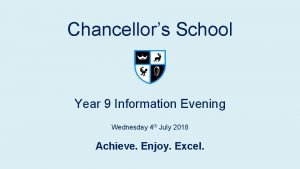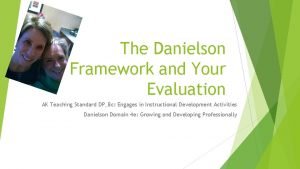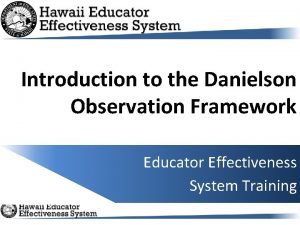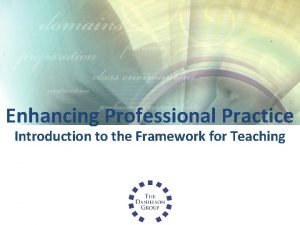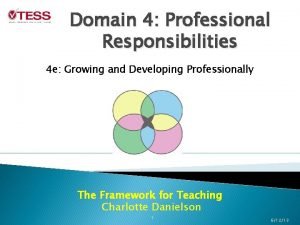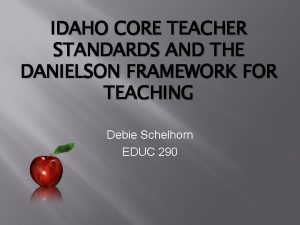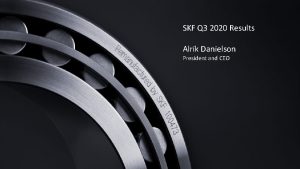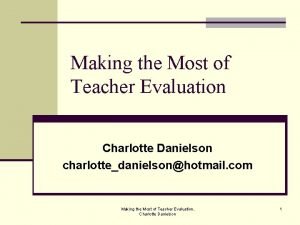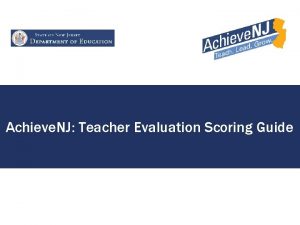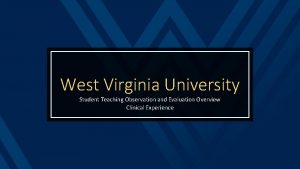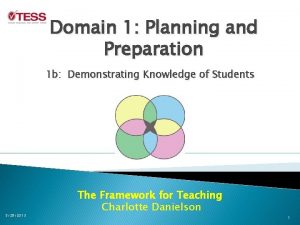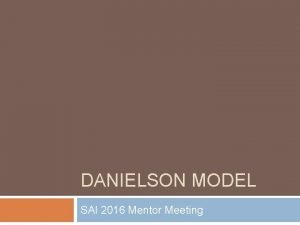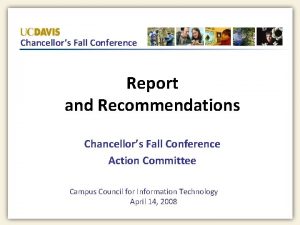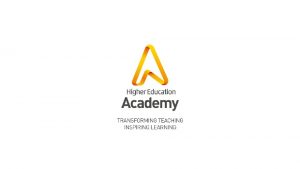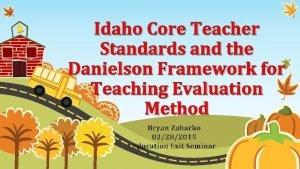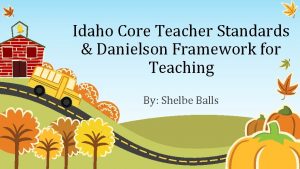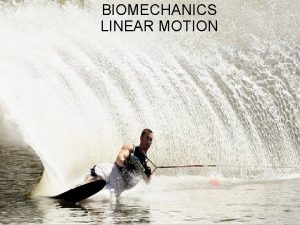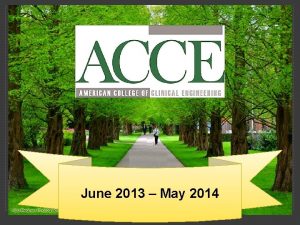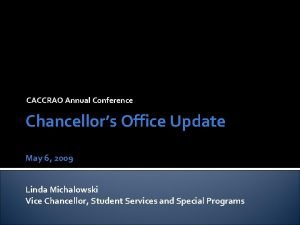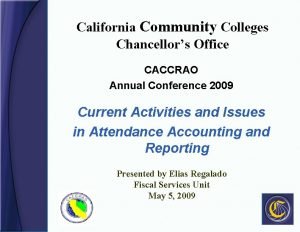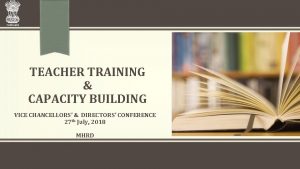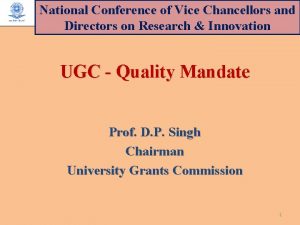CHANCELLORS CONFERENCE DAY Danielson Framework June 6 2013


















- Slides: 18

CHANCELLOR’S CONFERENCE DAY Danielson Framework June 6, 2013

Objectives � Understand the logic and structure of the Framework for Teaching � Explore the priority competencies and how they can support improving teacher practice

The Wisdom Of Practice � If you were to walk into a classroom, what might you see or hear there (from the students as well as the teacher) that would cause you to think that you were in the presence of an expert? � What would make you think: “Oh, this is the classroom of a highly effective teacher. ”

Competencies

Interpreting Evidence � � � Evidence is a factual reporting of events. Evidence may include teacher and student actions and/or behaviors. It may also include artifacts prepared by the teacher or students. Evidence is free of evaluation or interpretation. Interpretation Low-Inference Evidence The pacing of the lesson was slow, allowing for student restlessness, disengagement, and disruptive behavior. Joe finished his independent work before the allotted time and then took Jane’s pen and materials. The teacher made a connection to previous learning. The teacher said “today’s activities are an extension of the work we did yesterday. ”

What are low inference notes? � � Low-inference notes describe what is taking place without drawing conclusions or making judgments. What do you see and hear the teacher and students doing? What evidence can you gather of student learning? What will students know and be able to do at the end of the lesson?

Comparing Notes

Evidence vs. Opinion… � Read each statement. Decide – is it lowinference evidence or opinion? � Discuss your answer with your elbow partner. � If you agree that the statement is an opinion, how would you reword the statement so that it is an evidence statement.

Evidence vs. Opinion… � The teacher said, “I assure you that today’s lesson will be quite interesting. ” � The teacher has planned and organized for maximum effect. � The last activity, discussion of the key scene, was rushed. � The teacher said that the Civil War was a tragedy for U. S. civilization.

Preparing to Observe � � While you view: Take low-inference notes, take down as much as you can. We will only view the video once, as we can only view classroom practice once. Coding sheets have plenty of room for you to collect evidence and a column to allow you to go back and identify what competencies are implicated by the evidence as well as note questions or other inferences. It helps us keep the evidence separate from our interpretations of it.

Best Practices For Observations

Connecting Evidence to the rubric � � � Review your own notes, (you may also add any evidence that another participant shared) Code your notes to identify which competencies your evidence supports Note: some evidence may not fit anywhere and some evidence may align to more than one competency

Video Resources � Video #1 – 9 th Grade ELA � Video #2 – 6 th Grade Math

Improving Practice � � � Identify an effective practice that you observed : What competency does the practice support? What evidence did you gather on this practice? Why is it effective? How can the teacher build on it to further student learning? Use the rubric to identify the next level for this teacher and identify how she or he might get there. Identify an area for growth: Which competency is it aligned to? What evidence did you gather on this area? Why is it a growth area? What can the teacher do to improve student learning? Use the rubric to identify the next level for this teacher in this area and identify how she or he might get there.

Component Exploration � Example of Practice at HEDI � Ineffective, Developing, Effective, Highly Effective

Best Practices for Sharing Feedback

Practicing Prioritization

Rating Reports � Cheng Rating Report � Smith Rating Report
 Day 1 day 2 day 3 day 4
Day 1 day 2 day 3 day 4 Pars chancellors
Pars chancellors Danielson framework
Danielson framework Danielson teacher evaluation form
Danielson teacher evaluation form Danielson 3c look fors
Danielson 3c look fors T-tess domain 4 examples
T-tess domain 4 examples Danielson framework summary
Danielson framework summary Day 1 day 2 day 817
Day 1 day 2 day 817 1 june children's day
1 june children's day Agile 2013 conference
Agile 2013 conference Hazmat for dummies
Hazmat for dummies Alrik danielson skf
Alrik danielson skf Danielson teacher evaluation scores
Danielson teacher evaluation scores Karen danielson
Karen danielson Danielson teacher evaluation scores
Danielson teacher evaluation scores Danielson clusters
Danielson clusters Planning and preparation examples
Planning and preparation examples Domain 1 planning and preparation
Domain 1 planning and preparation Basic evil karen horney
Basic evil karen horney

